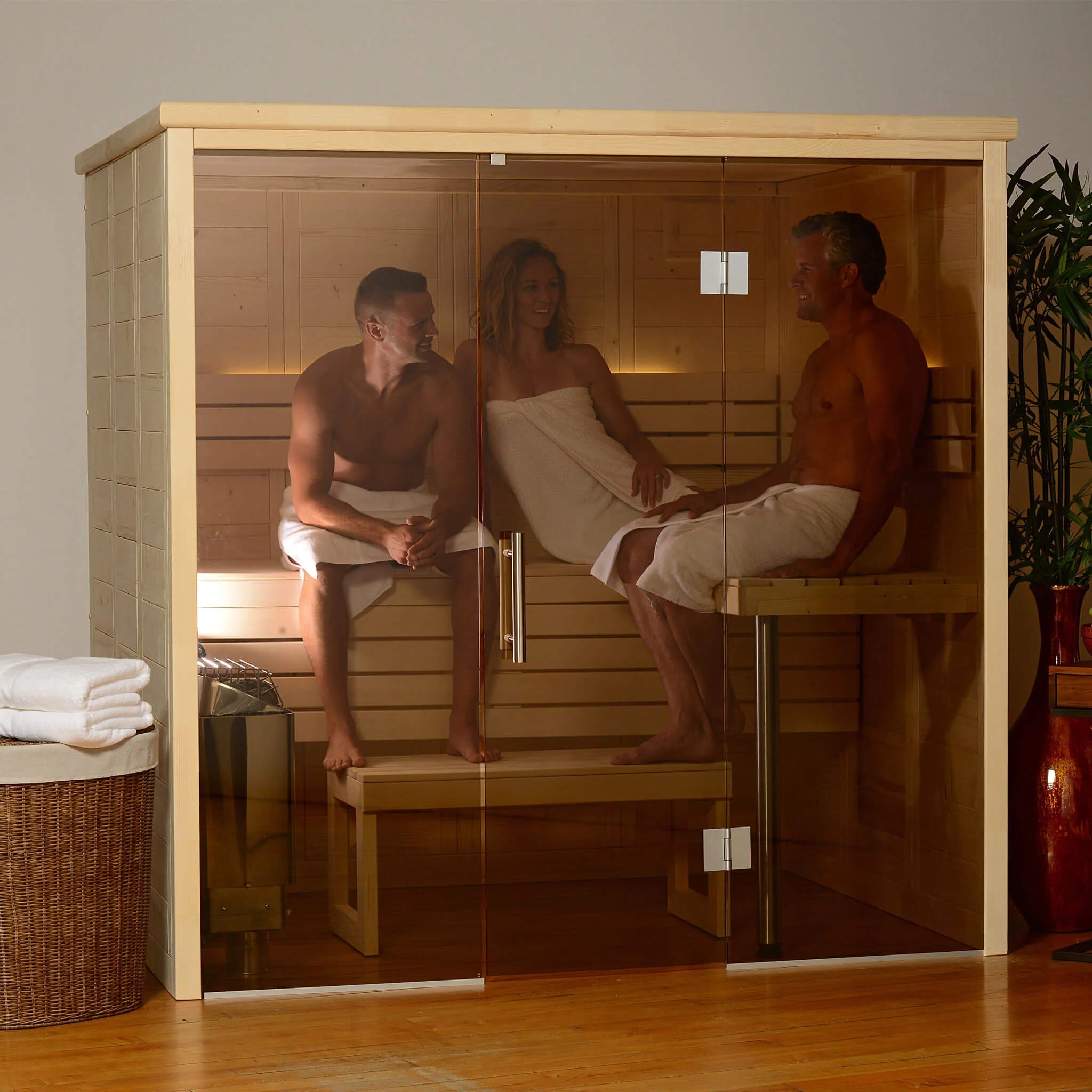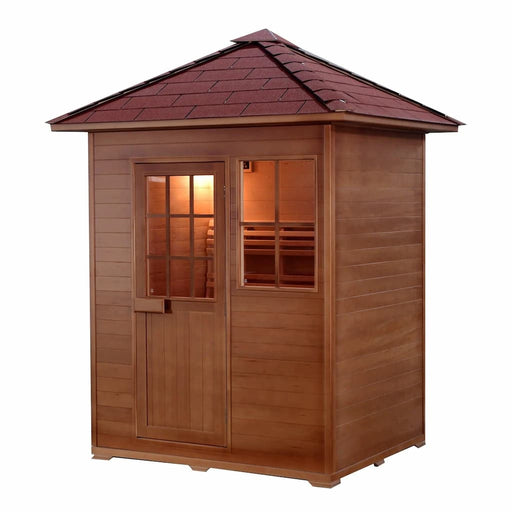Get This Report about Traditional Sauna
Get This Report about Traditional Sauna
Blog Article
The Ultimate Guide To Traditional Sauna
Table of ContentsTop Guidelines Of Traditional SaunaThe Of Traditional SaunaExcitement About Traditional SaunaTraditional Sauna Fundamentals ExplainedThe Definitive Guide to Traditional Sauna
A lot of the weight lost in a sauna is water loss and is re-gained upon rehydrating. Without a doubt sauna can be an essential part of a healthy weight loss program. To check out the differences between traditional and IR saunas, I will separate these right into proven, theoretical, and produced distinctions.Therefore, the best factor in the saunawhich goes to the ceiling straight above the sauna heateris normally between 185 and 190 F. Claims that a conventional sauna exceeds 200 F is just not real and not appropriate for electric saunas sold in the United States. The temperature for a far-infrared sauna is generally established between 120 and 140 F; nonetheless, unlike the standard sauna, the objective in and IR room is not to attain a high temperature.

When a conventional sauna has been properly heated up, the sauna walls are cozy, the air temperature has achieved set temperature and the rocks are incredibly warmed. As a fascinating side note, the warmed wall surfaces and the rocks are producing far-infrared warm, combined with the warmed air, to develop an "enveloping warm".
Traditional Sauna Fundamentals Explained
When the heat is achieved, the aspects cycle on and off to preserve the heat. The majority of traditional sauna individuals appreciate pouring water over the rocks to produce vapor to raise sauna moisture levels. The benefits of putting water over the rocks consist of: making the room much more comfortable, moistening the nasal flows, and allowing the usage of aromatherapy by blending essential oils with the water.

When the power enters the body, it triggers the body temperature level to enhance and eventually causes sweat. In an infrared sauna it is essential for the emitters/heaters to stay on almost constantly. Because there is no mass of rocks to keep heat, the sauna will cool down if the emitters shut off.
Traditional Sauna Can Be Fun For Anyone
As discussed over, the sauna bather in an infrared area wishes to place himself in front of running emitters to obtain optimal advantage from the heat. The heating time for both rooms can be really different, relying on how the areas are used. For a traditional sauna, a bather needs to allow 30-40 mins for the room to attain a desired temperature level and to correctly pre-heat the rocks.

A well created sauna will generally accomplish a temperature level of 150-160 F in about 30-40 minutes (Traditional Sauna). For hotter temperature levels, the room may require to warmth for a longer period. Once the space attains set temperature, the heating unit will certainly cycle on and off, generally operating concerning 50% of the moment. The insulated wall surfaces and the heated rocks will maintain the area warm and at stable temperatures.
To some, 15 mins was "thrown away" while the infrared energy heated the wood panels rather than heating up a body, while others discover a pre-heated space to be extra comfy and believe an elevated starting temperature is required to begin perspiring. The size of suggested use for every space is approximately the same (10-15 minutes per session); however, due to the reduced air temperatures and the capability to feel the impacts of infrared heat quicker than a standard sauna, it is not unusual for an individual to spend a total of 20-30 minutes in an infrared sauna.
See This Report on Traditional Sauna

The ordinary cost per kWH of power in the U.S. is around $0.11, so a 4.5 kW heating system will set you back about $.50 to run for one hour, if the heating unit runs continually for one hour. Usually a sauna heating system will certainly run for 75% of the very first hour and 50% of succeeding hours on given that the elements cycle once the set temperature level is attained.
A 2 person far-infrared space is generally literally smaller than a standard sauna, usually about 4' x 4' or smaller. The IR heater is normally 1.5-1.7 kW making use of a 120 volt 15 amp plug-in service. Because the space can be made use of sooner than a sauna area, we will certainly assume great post to read the space is pop over to this web-site utilized for to of an hour including warm up time.
Ultimately, there is a hardly ever discussed difference in the social experience between the two rooms. While our culture has lost a few of the social advantage of the typical sauna experience, it can be really socially satisfying (Traditional Sauna). From family members time in the sauna, to heart-felt conversations with significant others, to sauna partiesthe conventional sauna experience can cause intimate mingling
Fascination About Traditional Sauna
Most greater end infrared rooms consist of tinted light treatment, sound systems and full-glass fronts.
Report this page